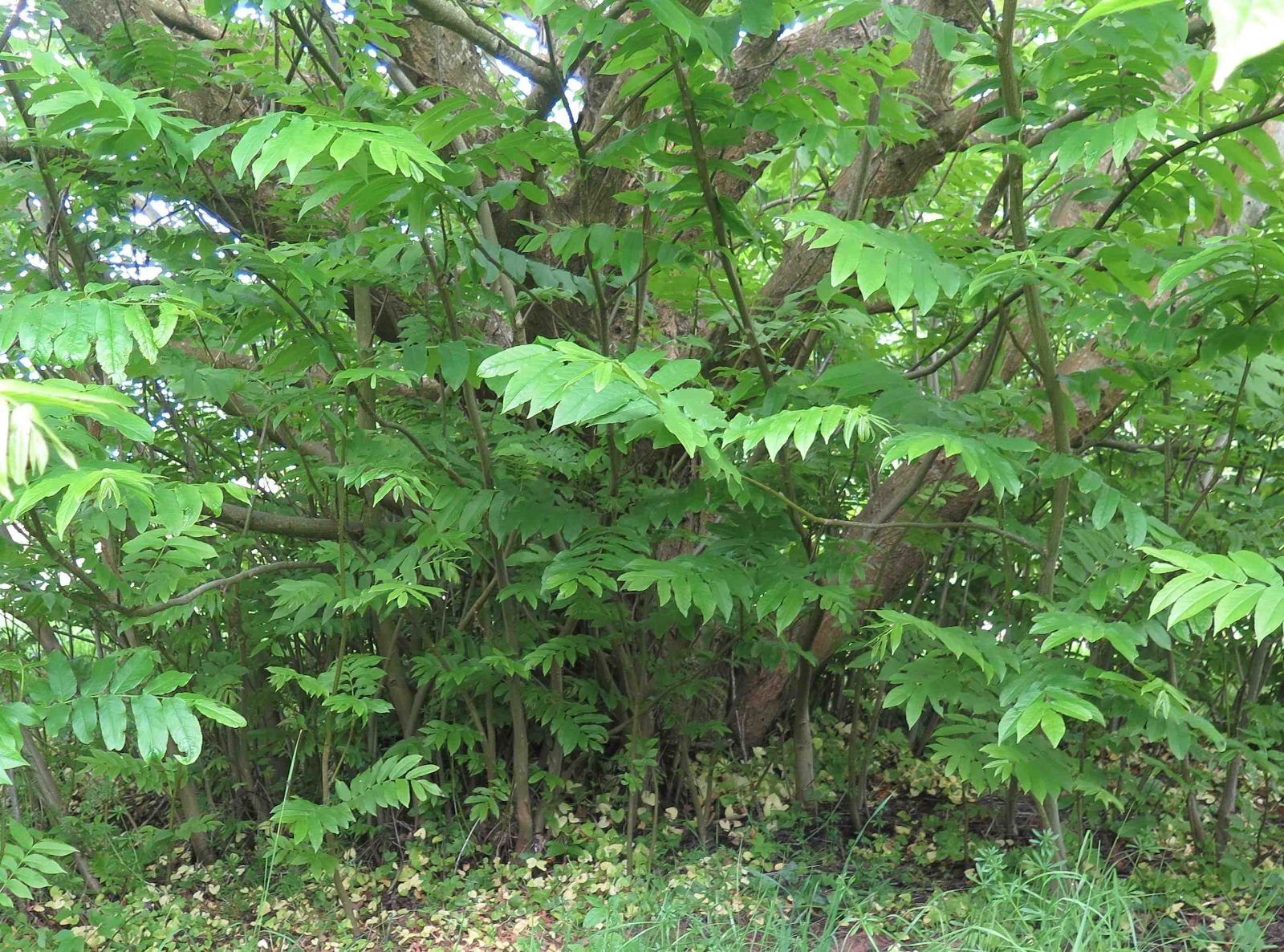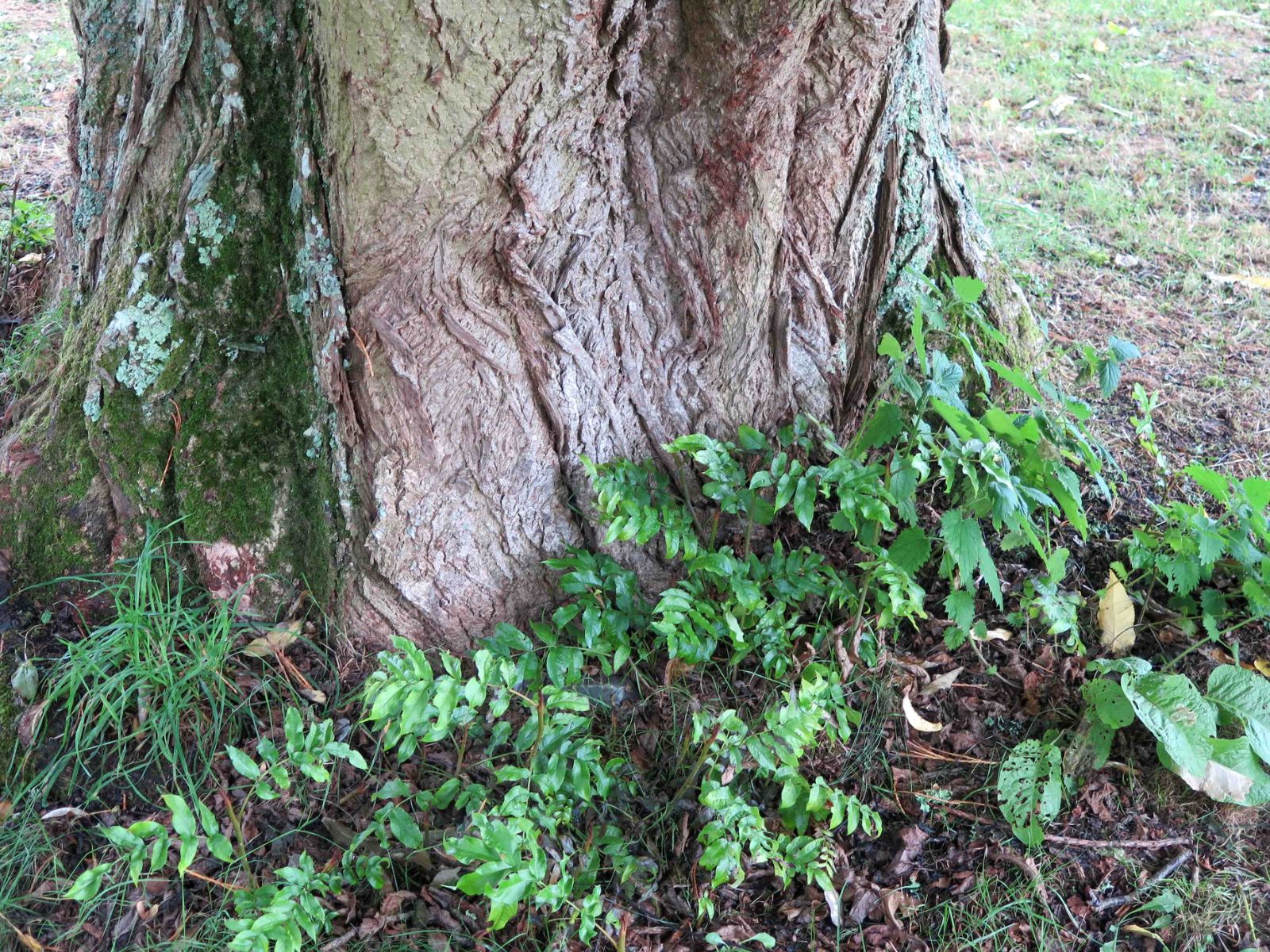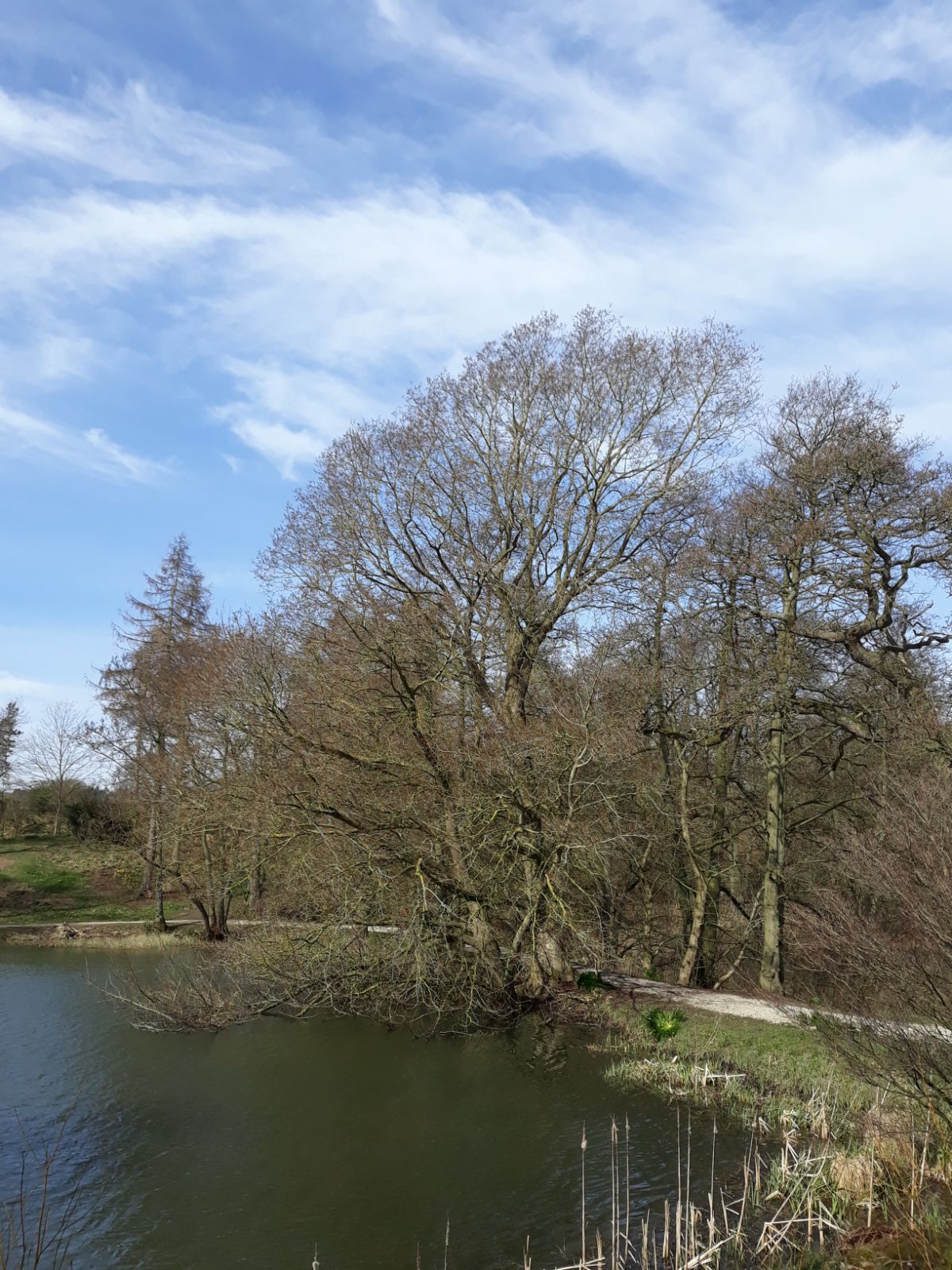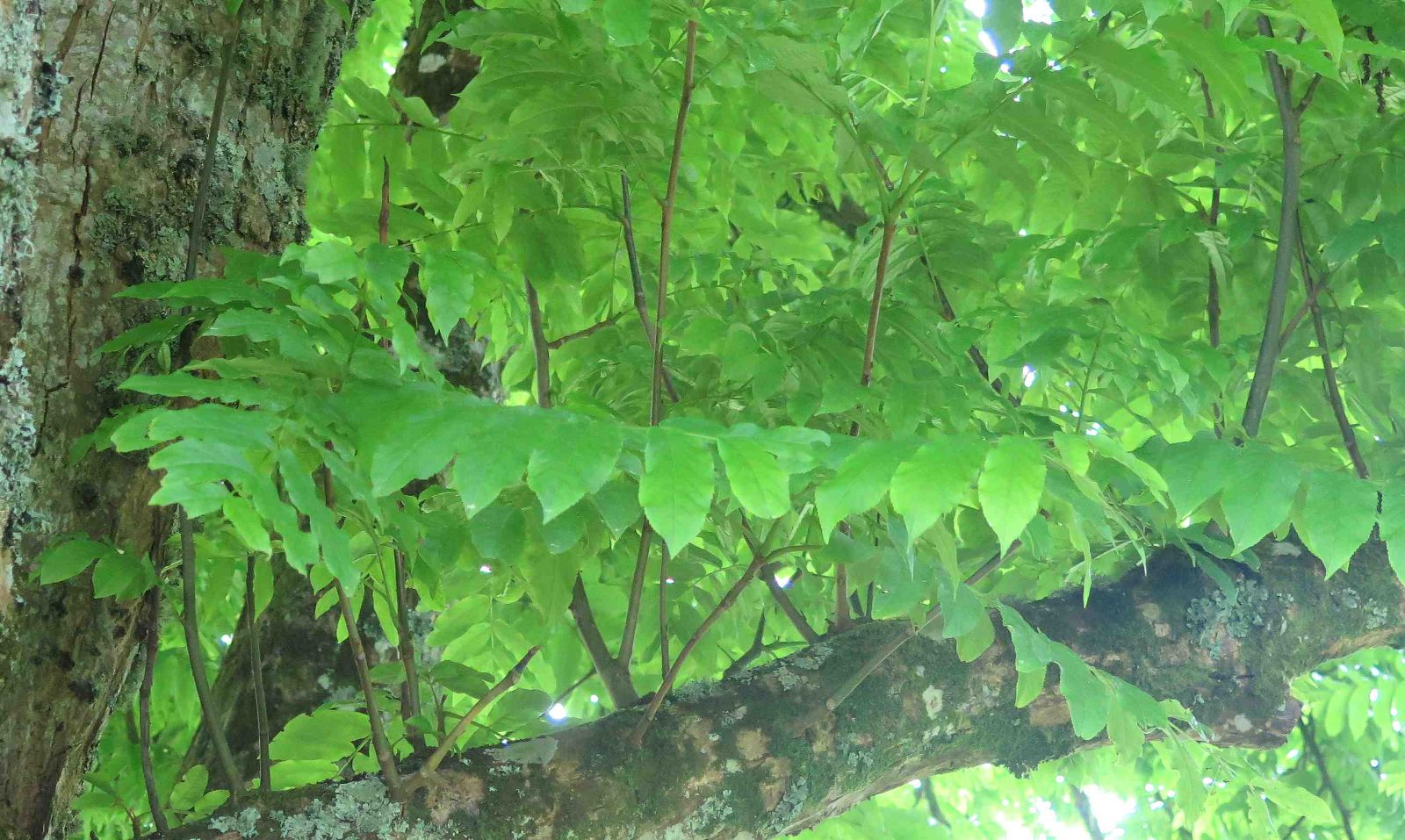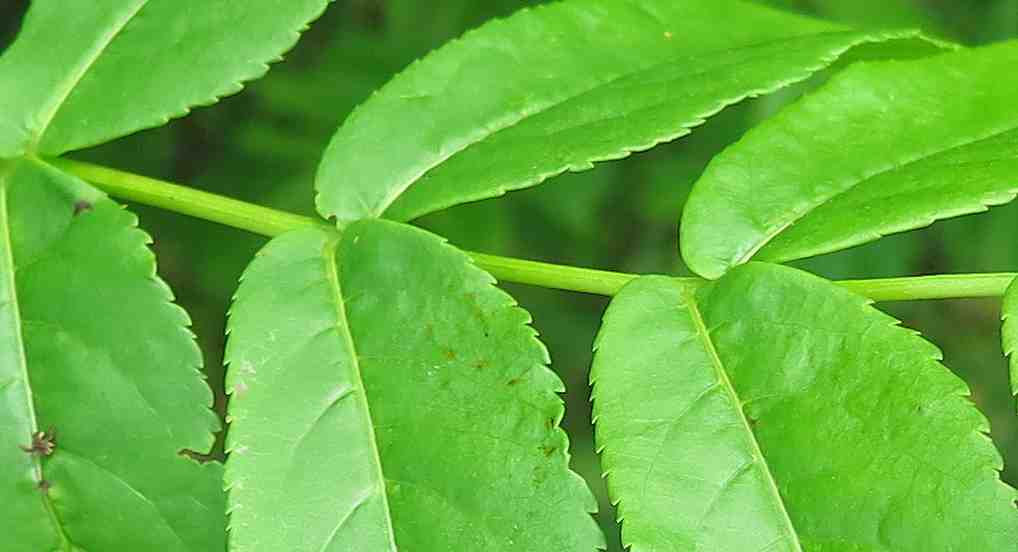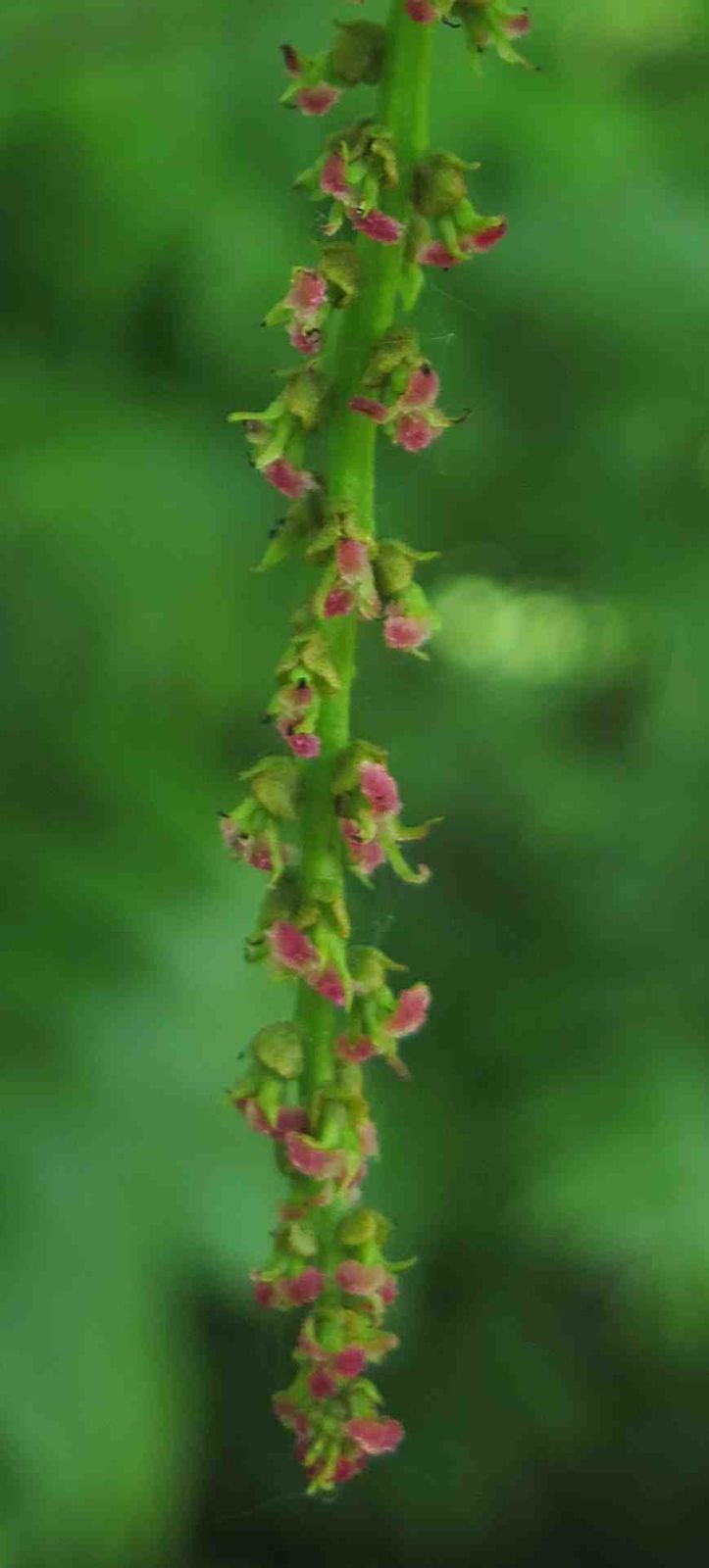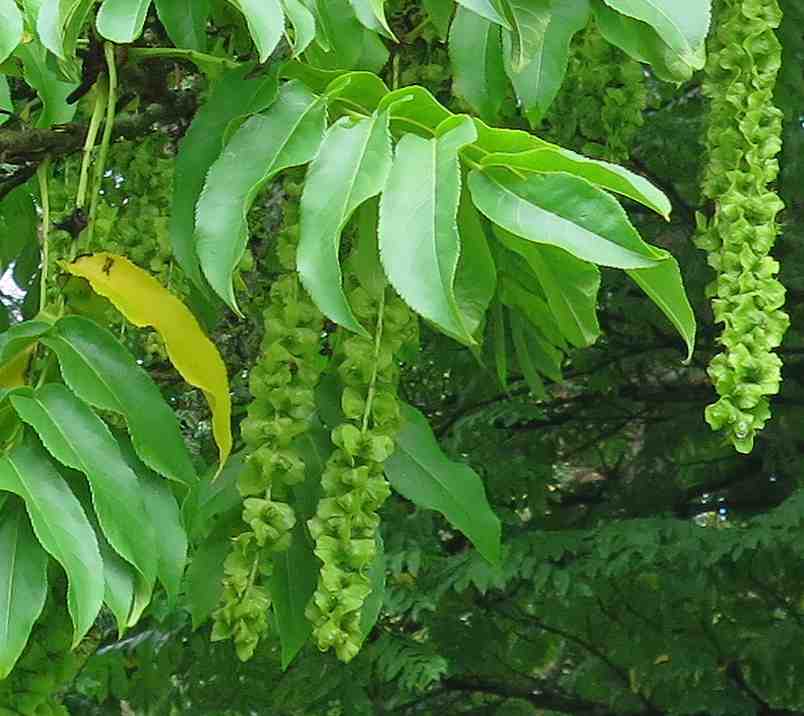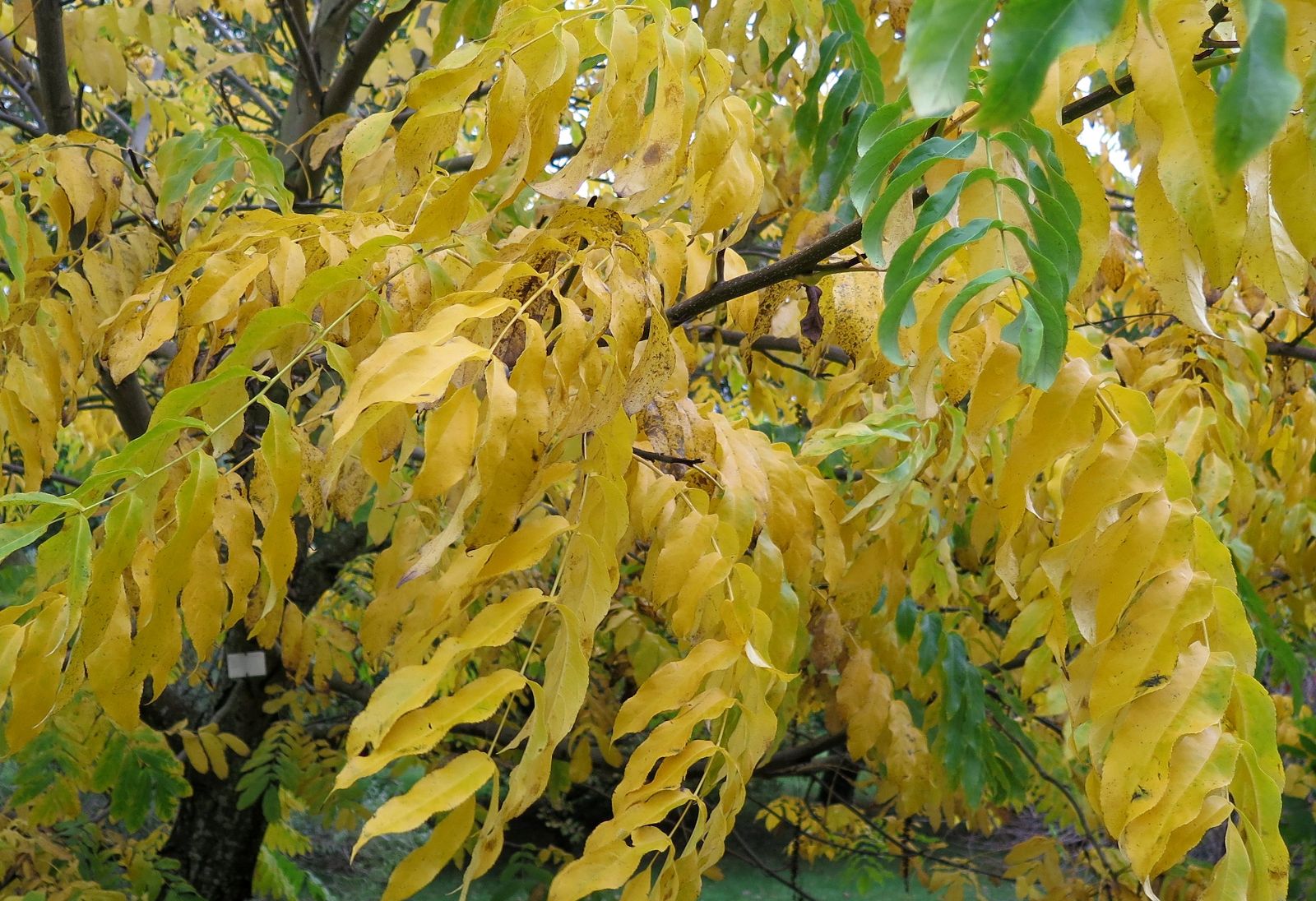Pterocarya fraxinifolia
Sponsor
Kindly sponsored by
a member of the International Dendrology Society
Credits
Julian Sutton (2019)
Recommended citation
Sutton, J. (2019), 'Pterocarya fraxinifolia' from the website Trees and Shrubs Online (treesandshrubsonline.
Genus
Common Names
- Caucasian Wingnut
Synonyms
- Juglans fraxinifolia Lam.
- Pterocarya caucasica C. A. Mey.
- Pterocarya fraxinifolia (Lam.) Spach
- Pterocarya pterocarpa Kunth ex I. Iljinsk.
Large tree to 35 m × 2 m, with deeply fissured, grey-black bark. Crown potentially broad, usually much branched from a short trunk or multistemmed, often suckering freely from the roots or base of trunk. Branchlets olive-brown, pubescent at first, buds oblong, naked. Leaves imparipinnate, to 60 cm long, rachis unwinged. Leaflets 9–21(–27), to 12 cm long, sessile, oblong, obliquely rounded at base, more or less acuminate, margins serrate; dark green, glabrous and glossy above, lighter with pubescent midribs below. Male catkins green, 7–15 cm, dense, cylindrical; female catkins 30–50 cm, less dense, stigmas pink to purple. Nuts winged, orbicular-ovate to elliptic-rhomboid. Flowering time: May (UK), fruits becoming increasingly conspicuous as they develop through the summer. (Bean 1976; Huxley et al.1992; Kozlowski et al. 2018).
Distribution Azerbaijan Talysh Mountains Georgia Eastern coast of Black Sea Iran Elburz Mountains, Zagros Mountains Turkey Black Sea coast bordering Georgia
Habitat Deep, moist soils near rivers, rarely on alluvial plains.
USDA Hardiness Zone 5-8
RHS Hardiness Rating H5
Conservation status Least concern (LC)
Taxonomic note There seems to be an unresolved nomenclatural issue here. P. fraxinifolia would seem to take precedence, but it is sometimes suggested that the name was not validly published, and that P. pterocarpa is the correct name. We have been unable to resolve this issue, and follow Kozlowski et al. (2018), in line with the most frequent scientific and horticultural usage. Strangely, the Plants of the World Online website (Royal Botanic Gardens, Kew 2019) accepts both names, treating them as if there were two distinct plants involved, despite there clearly being only one.
Pterocarya fraxinifolia is the most familiar wingnut in European cultivation, almost certainly due to the proximity of its natural range, rather than any special suitability. It is the westernmost member of the genus, restricted to three areas of western Asia.
The Colchis region lies at the eastern end of the Black Sea, in western Georgia and a small neighbouring part of Turkey. Colchic forests are seen as relicts of pre-Pleistocene vegetation, and contain other relict species such as Quercus hartwissiana and Buxus colchica. The Hyrcanian forests to the south and south-west of the Caspian Sea are also seen as Tertiary relicts. Human activity means that these forests are now restricted to the north-eastern slopes of the Talysh Mountains of Azerbaijan and the northern slopes of the Elburz Mountains in Iran. Pterocarya fraxinifolia shares these forests with well-known relicts including Diospyros lotus, Parrotia persica and Zelkova carpinifolia. A small but thriving population was found beyond these classic areas in 2015, beside the River Lopota in eastern Georgia (Kozlowski et al. 2018). Despite being rated ‘Least Concern’ by the IUCN, these authors consider the species to be under significant threat across its range from a wide range of human activities.
The Caucasian Wingnut was introduced to Europe, France initially, from Iran in 1782 by botanist-explorer Andre Michaux (Bean 1976). It is not clear to what extent older plantings are derived from this material, or whether subsequent wild collections were more significant.
Large, old trees are found across the British Isles, especially in the south. Two Dorset gardens, Melbury Park and Abbotsbury Subtropical Gardens, have a number of well-known, very large specimens thought to be from stock introduced around 1845 (perhaps not directly from the wild) by the diplomat William Fox Strangways. The largest at Melbury (34 m × 209 cm, 2009) split and collapsed in 2009 (The Tree Register 2019). Two years later, the largest at Abbotsbury, a huge, low-branching tree, was found to have extensive fungal infection and was felled as a precaution (BBC News 2012). Other notable examples include a tree at Kilmurry House, Co. Kilkenny (30.5 m × 76 cm, 2000) and one at Syon Park, London (22 m × 250 cm, 2013 – The Tree Register 2019).
Notable specimens are found across Europe, south to southern France and Northern Italy, east to the Czech Republic and Austria, and north to the Baltic (monumentaltrees.com 2019). Variation in hardiness between cultivated stocks has been observed near the northern limit, (Arboretum Mustila 2019). Spring frost is more damaging than winter cold. ‘The lover of trees will find nothing more interesting in and around Vienna than the magnificent examples of Pterocarya fraxinifolia’ enthused Bean (1976), noting that trees here would experience colder winters and warmer summers than in Britain.
This species is not widely grown in North America, despite being in cultivation there by 1891 and in the nursery trade by 1907 (Jacobson 1996). It is recorded at the Arnold Arboretum, MA as younger specimens (Arnold Arboretum 2019), and at Washington Park Arboretum, WA (University of Washington Botanic Gardens 2019). Anderson (1933) reported that it did not grow well at the Arnold. Jacobson (1996) mentions large specimens at Bel Air, MD (26 m, 1990) and Louisville, KY.
The vast bulk of an aged specimen is impressive, but suckering is a real drawback to this species as an ornamental. At least annual removal is advisable, and it should not be planted near paved areas or the foundations of buildings. When suckering is not controlled, a great thicket develops, and a loose clump of large trunks can eventually result. This is seen at Cambridge University Botanic Garden, where suckers were allowed to grow up after an earlier tree blew down in 1886 (Raggett 2018). The tallest of these had reached 27 m by 2004 (The Tree Register 2019). Even in an intensively gardened setting, suckers may establish in the clear areas around neighbouring trees. When these are other wingnuts, it gives the false impression that the tree itself is suckering: the difference is unlikely to be noticed except by those who take a close interest in Pterocarya. There is a fine example of this at RBG Edinburgh, where specimens of several species including a P. fraxinifolia planted in the 1920s grow together near the East Gate. Vigorous suckers from it were among the suckers of a neighbouring P. stenoptera and – perhaps by using this as a stepping stone – grew thickly around a non-suckering specimen of P. macroptera 23 m away. Paradoxically, the original P. fraxinifolia had rather few suckers, probably because the surface roots of this old specimen were fully exposed, forming a pavement much walked on by visitors (pers. obs. August 2021).
Pterocarya fraxinifolia can hybridize with P. stenoptera to give the fertile P. × rehderiana. Hybrids are normally distinguished by the presence, fully or partially, of a rachis wing. There have been ongoing problems with identification, and there may well be cryptic hybrids masquerading as P. fraxinifolia (see notes under P. × rehderiana). Acquiring trees from wild origin seed, or more realistically plants vegetatively propagated from wild origin trees, ensures that they are true to name. To this end, Pan-Global Plants offers material vegetatively propagated from the Abbotsbury stock, introduced before P. stenoptera had reached Europe, under the name ‘Abbotsbury Giant’ (Pan-Global Plants 2019). The same nursery offers plants derived from an Azerbaijan collection under NJM 13.007.
var. dumosa Schneid.
Synonyms
Pterocarya dumosa Lav.
A shrubby variety, with small leaflets 5–8 cm long.
Bean (1976) notes that it was first noticed in cultivation, at the Arboretum de Segrez, France, but goes on to quote the Belgian nurseryman Jean Van Volxem (1877) in support of its being a wild form: ‘The country around Lagodechi [Georgia] is very interesting. Near the river are extensive swamps, where I saw P. caucasica [P. fraxinifolia] growing sometimes as an enormous tree, sometimes as a large shrubby bush. The two forms are intermixed with each other, so that no condition of soil or exposure can explain the fact, and there is, as far as I saw, no intermediate form, and I could detect no difference between the two forms except as to habit and size.’ This in itself might appear to be an argument not for the plant having varietal status, but being a forma.
It is notable that this taxon does not appear in modern research literature, is not mentioned in a recent review of the status of wild Pterocarya (Kozlowski et al. 2018), and is not recognised by The Plant List (2019). It is available from European nurseries, and in the absence of further information is perhaps best thought of as a cultivar masquerading as a botanical variety.
The website Dendrologie Online (2006) lists another little known shrubby cultivar ‘Albomaculata’, described as being weak,with leaves spotted-white, especially in youth.






